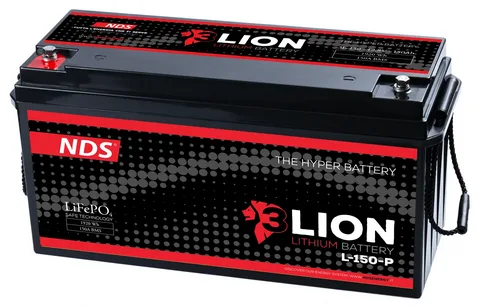It could be time for an alternator replacement when your Ford Territory starts showing signs of trouble, like dimming lights or a dead battery. This essential component keeps your vehicle’s electrical system running smoothly by recharging the battery while you drive. While you may think it’s a job best left to professionals, replacing the alternator is a DIY task that many can tackle with some basic tools and patience. If you’re ready to roll up your sleeves and save on mechanic bills, this guide will walk you through every step of the process. With just a little effort and know-how, you’ll have your Ford Territory Alternator back in shape before you know it!
Tools And Materials Needed
Before you replace the alternator in your Ford Territory, gathering all the necessary tools and materials is essential. Having everything on hand will make the process smoother and more efficient.
Start with basic hand tools like a socket set, wrenches, and screwdrivers. These are crucial for removing bolts and securing components during installation. A ratchet wrench can save you time when dealing with tight spaces.
Next, consider having a multimeter handy. This tool helps test the old and new alternators for electrical issues before installation. It’s always better to be cautious about any underlying problems.
You’ll also need a replacement alternator that matches your Ford Territory’s specifications. Check part numbers or consult an auto parts store to ensure compatibility.
Don’t forget safety equipment such as gloves and goggles! Protecting yourself under the hood is vital to avoid injuries from sharp edges or hot components.
Keep some rags nearby for cleaning up spills or dirt along the way. With these tools and materials, you’ll be well-prepared for this DIY project.
Preparing Your Ford Territory
Before diving into the replacement process, preparing your Ford Territory properly is crucial. Start by ensuring you have a flat and stable surface to work on. A garage or driveway is ideal, as it keeps you away from traffic and distractions.
Next, gather all necessary tools and materials. You’ll need basic hand tools like wrenches, pliers, and screwdrivers. Everything within arm’s reach will make the job smoother and more efficient.
Safety should always come first. Disconnecting the battery is essential before working on any electrical components related to the alternator. This step helps prevent electrical shocks or short circuits while handling wires.
Check your vehicle’s manual for specific instructions related to your model year regarding access points for the alternator. Familiarizing yourself with these details will save time later when removing the old unit.
Ensure you have a new alternator ready for installation that matches your Ford Territory specifications. Investing in quality parts can lead to better performance in the long run.
Removing The Old Replacement Alternator Ford Territory
To remove the old Replacement Alternator Ford Territory, ensure you have all your tools ready. You’ll need a socket set, ratchet wrench, and possibly some extensions to reach those tricky bolts. A flashlight can also help illuminate tight spots.
First, disconnect the negative battery terminal. This step is crucial for safety reasons—preventing electrical shorts or shocks while working on the system. With that done, locate the alternator, usually near the front of the engine bay, mounted on top.
Next, identify and remove any mounting bolts securing the alternator in place. Depending on your model year, these may be located at various angles. Please keep track of each bolt as you remove them; organizing them will save time during reinstallation.
After loosening all bolts or brackets attached to it, gently wiggle the alternator free from its mount. You might need to adjust surrounding components slightly for better access without forcing anything too hard.
Carefully detach any remaining wiring connectors attached to your old alternator before lifting it out completely. Ensure no wires are snagged as you pull them clear; damaging them can lead to further complications.
Installing The New Alternator
Installing the new alternator requires careful attention to detail. Start by positioning the new unit in place. Make sure it sits snugly within the mounting brackets, and align any bolt holes for a seamless fit.
Next, insert and hand-tighten the mounting bolts to secure it temporarily. This allows you some flexibility to adjust its position if needed. Once everything looks aligned, use a socket wrench to tighten those bolts firmly, but avoid over-torquing them.
Now, it’s time to reconnect all electrical connections. Begin with the main power cable, ensuring that it’s snug and secure on the terminal connection of your Ford Territory alternator. Follow this by connecting any additional wiring harnesses—these are crucial for proper functionality.
After each connection, double-check that there are no loose ends or exposed wires that could cause issues later on. A tidy installation pays off down the line.
Ensure that your alternator is oriented correctly before tensioning the belt—this step will help guarantee optimal performance from your newly installed part.
Reconnecting The Electrical Wiring
After installing the new alternator, it’s time to reconnect the electrical wiring. This step ensures your Ford Territory runs smoothly with its newly fitted component. Start by locating the connectors you previously detached during disassembly.
Check each connector for damage or corrosion before plugging them back in. Clean any dirt or grime accumulated on the terminals to ensure a solid connection. A good contact will help prevent electrical issues later on.
Begin with the main power cable, usually secured by a nut and bolt on the back of the alternator. Tighten this securely, but avoid overtightening, as it can cause damage. Then, connect any smaller wires according to their respective positions.
If your model has a plug-in connector, ensure it’s firmly seated until you hear or feel it click into position. Double-check that all connections are tight and properly aligned; loose wiring could lead to charging problems.
Once everything is connected, take a moment to review your work before moving forward. Ensuring proper connections now will save you headaches when testing your vehicle’s performance later.
Checking And Tensioning the BA Falcon Alternator
After installing the new BA Falcon Alternator checking and tending the alternator belt is crucial. A properly tensioned belt ensures optimal performance and prevents premature wear. Start by inspecting the belt’s condition for any visible signs of damage or cracking. If you notice significant wear, it’s best to replace it.
Next, locate the tensioner pulley, which maintains proper belt tightness. Use a wrench or socket to loosen the bolt holding it in place. Do not remove it completely; loosen it enough to adjust the tension.
Once loose, pull on the belt while pushing down on the tensioner arm until you achieve adequate tightness. Generally, there should be about half an inch of play when pressing down on the longest stretch of your alternator belt with moderate force.
After adjusting, carefully tighten your tensioner back into position without overtightening, as this can lead to additional strain on components. It’s wise to double-check both alignment and tightness before proceeding further.
Take a moment to inspect belts around other accessories, such as power steering or air conditioning, since they may share pulleys with your Ford Territory alternator setup.
Testing The New Alternator
Once you’ve installed the new alternator, it’s time to put your work to the test. Start by reconnecting the battery terminals securely. A good connection is essential for accurate testing.
Next, turn on your Ford Territory and observe any warning lights on the dashboard. If everything looks normal and no warning signals are illuminated, that’s a positive sign that your installation was successful.
Using a multimeter, check the battery voltage while the engine is running. If the alternator is functioning correctly, you should ideally see readings between 13.8 and 14.5 volts. If it’s lower or higher than this range, there might be an issue with your installation or the new unit itself.
Another crucial step involves revving your engine while watching those voltage readings again. The numbers should remain steady as you increase RPMs; any significant drop may indicate problems in charging.
Listen carefully for unusual noises coming from under the hood during the operation. Grinding or whining sounds could suggest misalignment or other issues requiring attention before hitting the road confidently.
Common Issues of Au Falcon Alternator and Troubleshooting
You may encounter a few common issues when replacing the Au Falcon Alternator. One frequent problem is misalignment. If the new alternator isn’t lined up correctly with the belt, it can lead to premature wear or even failure. Always double-check alignment before tightening everything down.
Another issue could be unsafe electrical connections. Loose or corroded wires can prevent proper charging and might trigger warning lights on your dashboard. Inspect all connectors carefully to ensure a tight fit and clean surfaces.
Sometimes, you might notice unusual noises coming from the engine bay after installation. These sounds could indicate something isn’t right—either with the alternator itself or how it’s installed. Listen for grinding or squeaking noises; they shouldn’t be ignored.
If you’re experiencing battery drain despite installing a new alternator, it’s worth checking for parasitic draws within the electrical system of your Ford Territory. This issue often stems from other components rather than the alternator itself.
Look for fluid leaks near where you’ve worked. While not directly related to the alternator replacement process, they can signal underlying problems that need immediate attention.
Conclusion
Replacing the alternator in your Ford Territory can seem daunting, but it’s achievable with patience and guidance. Armed with the right tools and knowledge, you’ll find that this task is within your reach.
Understanding each step of the process makes it easier to tackle. Every action plays a crucial role in ensuring a successful replacement, from preparing your vehicle to reconnecting electrical wiring. It’s all about following through methodically.
Remember how important it is to test the new alternator after installation. This ensures everything operates smoothly and provides peace of mind on the road ahead. Regular checks will help maintain its functionality over time.
Common issues may arise during or after installation, but troubleshooting these problems can be straightforward if you remain calm and informed. Your resourcefulness will pay off as you gain confidence in handling future repairs.
Every DIY project adds valuable experience under your belt. With practice comes mastery, making car maintenance less intimidating for your Ford Territory or any other vehicle you own.
FAQs
What are the signs of a failing alternator?
Look for dimming headlights, warning lights on your dashboard, or unusual noises from under the hood.
How long does it take to replace an alternator?
Depending on your skill level and available tools, you could complete this job in about two to four hours.
Do I need special tools for this replacement?
While basic hand tools like wrenches and sockets will suffice, having a torque wrench is beneficial for ensuring proper installation.
Can I drive my Ford Territory with a bad alternator?
It’s not advisable. If the battery drains completely, you may experience electrical failure or be stranded.
| Related Business Listings |
| Contact Directory |
| Local Business Profiles |




